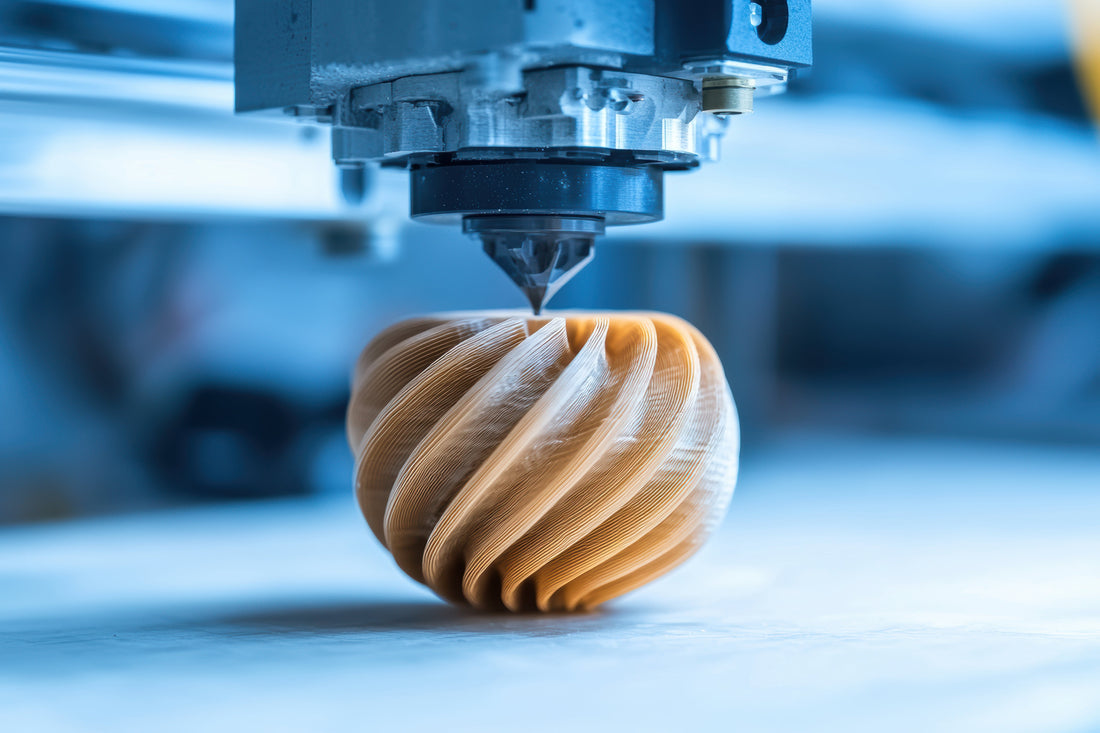
Mastering PLA Filament: Tips for Perfect 3D Prints Every Time
Share
PLA is the most popular 3D printing filament on the market, and for good reason. PLA's ease of use, affordability, and excellent print quality make it a no-brainer for hobbyists and small businesses alike. No matter what you're printing, mastering PLA plastic filament is key to getting consistent, reliable results. This guide reviews essential tips to help you get the best out of your PLA 3D print filament every time.
1. Choose the Right PLA Filament
Not all PLA filaments are created equal. While PLA is known for being user-friendly, differences in manufacturing quality, additives, and storage conditions can affect how it prints. When choosing a 3D printer filament, consider:
- Brand reputation: High-quality brands strive to provide consistency in filament diameter and material composition. RAW3D trusts and supplies several reputable brands, including eSUN, Polymaker, SUNLU, and, of course, our own brand.
- Additives: Some PLA plastic filaments are infused with materials such as wood, carbon fibre, or metal for aesthetic or functional purposes. Brands such as Polymaker offer specialty blends that cater to different applications.
- Colour and opacity: Some colours and finishes may require fine-tuning of print settings. eSUN and SUNLU provide a wide range of vibrant colours, while RAW3D offers high-quality yet affordable options for everyday prints.
Investing in quality PLA filament from trusted suppliers ensures fewer print failures and better final results.
2. Store PLA Properly to Prevent Moisture Absorption
PLA is hygroscopic, meaning it absorbs moisture from the air. If your PLA filament has been exposed to humidity, it may lead to printing issues such as stringing, poor layer adhesion, and inconsistent extrusion. To keep your 3D printing filament in top condition:
- Store it in an airtight container with silica gel packets.
- Use a filament dryer if your PLA has absorbed moisture.
- Keep it away from direct sunlight and extreme temperatures.
3. Dial in Your Print Temperature for PLA
The ideal print temperature for PLA filament typically falls between 190°C and 220°C. However, the optimal setting depends on factors such as brand, additives, and your printer's specific setup.
- If the temperature is too low, you might experience under-extrusion and weak layer bonding.
- If it's too high, excessive stringing and blobs on your print could occur.
Start within the manufacturer's recommended range and adjust based on your print quality.
4. Bed Temperature and Adhesion Strategies
PLA prints well on various surfaces, but good bed adhesion is crucial to prevent warping and failed prints.
- A heated bed is optional for PLA, but if you use one, set it between 50°C and 60°C.
- Blue painter's tape or a PEI sheet provides a reliable surface for PLA prints.
- A light application of glue stick or hairspray can improve adhesion if needed.
Ensuring a clean, level bed before every print helps with first-layer adhesion and reduces print failures.
5. Print Speed and Cooling for Optimal Results
PLA benefits from moderate print speeds and effective cooling:
- A print speed of 40-60mm/s is generally ideal for quality prints.
- Proper cooling is essential for sharp details—keep your part cooling fan at 100% after the first few layers.
If you're printing fine details or overhangs, slowing down the speed and using strong cooling will produce sharper results.
Bonus Tip: Optimal print speeds can vary between types of PLA (e.g., PLA vs PLA High Speed). Always try the manufacturer's recommended range first and then adjust based on your print quality.
6. Adjust Retraction to Minimise Stringing
Stringing is a common issue when printing with PLA plastic filament. Retraction settings help control oozing and prevent wispy filament strands from forming between gaps.
- Start with a 1-2mm retraction distance and adjust as needed.
- A retraction speed of 30-40mm/s works well for most setups.
Tweaking these values in your slicer can significantly reduce stringing and improve print quality.
7. Fine-Tune Layer Heights and Wall Thickness
Layer height and wall thickness directly affect the strength and detail of your prints.
- A layer height of 0.2mm is an excellent balance between speed and detail.
- For structural strength, set your wall thickness to at least 1.2mm (typically three perimeters for a 0.4mm nozzle).
Higher-resolution prints (0.1mm layer height) provide better detail but take longer to print, so adjust according to your needs.
8. Post-Processing
For smoother finishes and improved aesthetics, PLA can be post-processed. Some common post-processing options include:
- Sanding - Use fine-grit sandpaper to smooth layer lines.
- Painting - PLA can be painted after priming for a professional look.
- Vapour smoothing - While not as effective as with ABS, certain solvents (such as ethyl acetate) can smooth PLA prints with care.
9. Troubleshooting Common PLA Printing Issues
Here are some common problems and how to fix them:
- Under-extrusion: Increase nozzle temperature or check for clogs.
- Warping: Ensure proper bed adhesion and use a heated bed if necessary.
- Layer separation: Increase printing temperature slightly for better layer bonding.
- Stringing: Adjust retraction settings and lower print temperature if needed.
Mastering PLA filament takes some fine-tuning, but with the right settings and storage practices, you can achieve high-quality, reliable prints every time. Whether printing prototypes, functional parts, or artistic models, these tips will help you get the best performance from your PLA plastic filament.
If you're looking for high-quality PLA filament for your next project, check out our range of premium 3D printer filaments designed for hobbyists and businesses alike!
